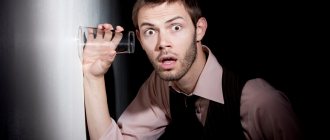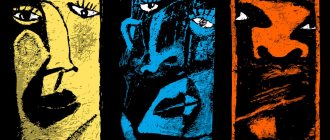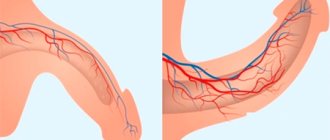This type of mental illness may also be called psychosis or paranoid symptom in medical practice. It is characterized by the presence of delusions in the patient, which are characterized by systematization. The patient is convinced that there is something false. At the same time, the perceived false is devoid of imagination and whimsicality. Among the manifestations there are the following variants of delirium:
- jealousy;
- persecution;
- dysmorphophobia;
- sensations of unrequited love and others.
Often the perceived manifestations are noticeably exaggerated or completely untrue. Diagnosis of the pathology is complicated by the variability of manifestations. Experts identify several of the most common manifestations.
Organic delusional disorder
The specificity of this variant of delusional personality disorder is a serious physiological disorder associated with the presence of focal lesions in the temporal and parietal regions of the brain, temporal lobe epilepsy. A common cause is previous encephalitis. This pathology also includes epileptic psychoses that are not accompanied by impaired consciousness. It is distinguished by specialists as a separate type of pathology.
Often accompanied by hallucinatory-delusional attacks. With them, patients lose control over aggressive impulses. Accompanied by unmotivated actions and other manifestations of instinctive behavior.
At the moment, doctors are not able to accurately determine the cause of the onset of manifestations. Observations have shown that the onset of the disease may be equally associated with bilateral genetic predisposition and damage to specific brain structures. Delusional disorders in this pathology can be acute or transient organic.
Regardless of the type, the onset is characterized by an acute onset, accompanied by symptoms such as hallucinations, perception disorders, and delusions. There is a severe disturbance in everyday behavior. Often the trigger is serious stress experienced by the patient up to 1-2 weeks before the incident.
Causes of the occurrence and development of the disease
The exact causes of the disease have not been established. It is known that the condition can develop under the influence of the following factors:
- Genetic predisposition. The presence of mental disorders in close blood relatives.
- Endogenous factor. Imbalance of special neurotransmitter substances in the human brain.
- External influences. The “trigger” for the development of pathology can be alcoholism, drug addiction, stress, and failures in personal life.
Chronic delusional disorder
In chronic delusional personality disorder, persistent delusions become a persistent symptom. It accompanies a number of mental disorders. They can be characterized as:
- schizophrenic;
- affective;
- organic.
A single picture of delirium or a series of interconnected pictures develops. They can last about three months or be lifelong. The forms of the disease are varied. At the moment, experts identify several leading ones:
- Paranoid syndrome, in which delusions are not accompanied by hallucinations. Delusional states change personality, but in this situation they do not have signs of dementia, due to which patients often seem completely normal to others.
- Paranoid syndrome, in this case, delusion fits into a certain system, but is less logical and more contradictory. Hallucinations become persistent. Patients constantly hear voices in their heads. Without treatment, it leaves an imprint on your professional and personal life.
- With Paraphen syndrome, delirium becomes obsessive, fantastic, fictitious.
Determination of the type of condition is carried out only by a doctor. As well as developing a course of treatment.
Delusional disorder treatment
Therapy includes psychotherapy and medication. It is psychotherapy that turns out to be more effective, as it allows you to solve behavioral and psychotherapeutic problems. After the courses, the patient begins to control his condition and behavior. Family therapy becomes a mandatory step.
The pathology is chronic. Long-term remissions are possible. In some cases, complete recovery is noted.
Organic delusional schizophrenia-like disorder
The disorder is not of endogenous origin. Manifestations lead to the formation of a schizophrenic effect. With this lesion, the following is formed:
- pretentious nonsense;
- delusional disorders of a religious type;
- interpretive nonsense.
Hallucinations are a common secondary manifestation. An astatic and depressive-dysphoric affect occurs. During treatment, medications are used that are determined by the physician.
Hallucinatory delusional disorders
With this lesion, a characteristic feature is the presence, in the complete absence of signs of confusion, of pronounced delusional and hallucinatory disorders. Among the differences:
- confusion;
- severe anxiety;
- motor excitations.
All these manifestations are caused by the constant presence of hallucinations, which are short-lived and occur without provoking factors. They have acute and chronic forms. As the hallucinations become chronic, they become monotonous. The patient adapts to his condition and the pathology becomes less visible to others. The individual distances himself from violations.
Acute delusional disorder
Delusional disorder does not have an organic form. Delirium is devoid of bizarreness. The paranoid personality structure becomes a provocateur. The number of confirmed diagnoses increases in families where there are people with schizophrenia. Due to sthenicity, patients often convince others of the reality of delusional manifestations. Patients often suffer from persecution syndrome and change their place of residence. They are inclined to join heretical sects due to religious ideas and ideas of greatness. The object of love is often chosen by famous stage personalities who do not know about the object experiencing love. A factor confirming pathology is the presence of delusional ideas, the duration of which exceeds three months. Delusions and hallucinations do not meet the criteria for schizophrenia.
Affectively delusional disorder
Disorders associated with disturbance of affect, involving disturbances in the emotional state. They include several pathologies, the most well-known of which are bipolar or major depressive disorder. Often characterized by the manifestation of inappropriate emotions.
The classification is divided into several types of disorders:
- depressive spectrum;
- bipolar spectrum;
- manic spectrum.
Doctors often associate the presence of affective delusional disorder with creativity.
Induced delusional disorder
The pathology initially occurs in a person who is part of a close circle of relatives or friends. The patient in this situation becomes only a recipient, transmitting delusional ideas and disorders of the dominant. Moreover, a mental disorder in this “pair” is present only in the dominant personality. The recipient only copies the behavior and thoughts of the leader.
The couple is often isolated from the outside world. Only the recipient maintains minimal contact. The danger becomes the indignation experienced by the dominant when there is excessive adoration. Such relationships can occur in the same family. Recipients are often women. The patient is unable to distinguish between reality and his own view of the world, accepted from the dominant one.
Features of delirium in women
The disorder may remain undiagnosed for a long time. The woman leads a socially active lifestyle, but looks slightly extravagant and strange. There is a tendency to exaggerate everything, to suspect everyone, to be jealous of a partner, to be overly intrusive and even hostile. And for some time this is perceived by others as a character trait. Even loved ones do not immediately pay attention to this behavior.
The content of delusions is based on lived experience. Information from the outside world is absorbed by the patient and interpreted incorrectly, altered beyond recognition.
There are a number of types of delirium in women:
- Erotomanic delirium. As a rule, a feeling of love for a celebrity is characteristic. There are attempts to meet the person on whom the psyche is fixated.
- Delirium of grandeur. Characterized by a belief in the presence of enormous talent and self-importance. Sometimes patients claim that they have made an important discovery, that they have reached unprecedented heights in some area.
- Delusions of jealousy in women. She torments herself with imaginary images of her partner cheating on her. She suffers and makes others suffer. She knows that she will suffer, but she is looking for new ways to be jealous. At first, ideas about adultery appear sporadically, often against the background of alcohol intoxication. Then questions arise about the details of the alleged betrayal with a demand to admit his guilt, which he promises to forgive. Next comes aggressiveness. This form can continue for years. It is important to remember that this is not jealousy, but delusion, it needs to be treated.
- Delirium of persecution. Manifested by thoughts about spying on a person.
- Hypochondriacal delusions. The lady is sure that she is seriously ill. This could be cancer, leukemia, HIV infection, etc. Delusional hypochondria should be distinguished from somatic symptoms of various types of neuroses.
- Nihilistic nonsense. Somewhat reminiscent of hypochondriacal delusions, but they are even more developed. It may even seem to a woman that his body is disappearing and does not even exist. Sometimes these beliefs are carried further and begin to relate to the “non-existence” of other people and, finally, the whole world.
- The ravings of a drunk woman. Caused by prolonged consumption of alcoholic beverages. Often observed in a hangover state. There is a feeling that now she will be killed and destroyed. She “sees” the murder weapon, hears threats. While fleeing, he commits life-threatening actions and can injure himself. Patients ask for help and contact the police. Acute alcoholic delirium lasts from several days to several weeks.
Treatment of delusional disorder
An important feature of therapy is contacting a specialist. Only a high-level professional is able to adequately convince a patient of the unreality of his ideas.
It is for this reason that psychotherapy courses play a leading role:
- individual;
- family;
- group.
During the course, the psychiatrist and psychotherapist jointly develop a course of procedures focused on the characteristics of each individual patient.
In cases where delusional disorders are severe, medications may be prescribed. The main place on this list is occupied by antidepressants and antipsychotics. If possible, the doctor tries to give up medications in favor of folk remedies, physiotherapy, and massages. Patients are recommended to take long walks and exercise. An effective way is to choose a new hobby, a hobby that distracts you from hallucinations and delusional thoughts. Such gentle therapy is recommended in the early stages of pathology.
Service price
- HOSPITAL Day hospital5 000
- Day hospital with intensive care8,000
- 24-hour hospital (all inclusive, cost per day) 12,000
- 24-hour hospital (all inclusive, cost per day). Single occupancy24,000
- 24-hour hospital (all inclusive, cost per day). Single occupancy in a superior room 36,000
- Primary family counseling for relatives of patients undergoing inpatient treatment free of charge
- Group psychotherapy for relatives of patients undergoing inpatient treatment free of charge
- Group psychotherapy for 24-hour and day hospital patients free of charge
- Individual post for a hospital patient (if indicated)6,000
Delusional disorders in psychiatry are quite common, and they are characterized by certain conclusions that have no basis. A person comes to such false conclusions not from a real assessment of the surrounding reality, but from internal pathological disorders of thinking, perception and mood.
Symptoms of delusional disorder
The presence of delusions distinguishes these disorders from schizophrenia. Pathology is characterized by delusional ideas. Disorders associated with delusions of grandeur may appear; the patient may be tormented by attacks of increased jealousy. The list also includes erotomania, litigiousness and other deviations that are not characteristic of the behavior of a healthy person. The appearance of disorders is often associated with some limitations in life activity. For example, emigrants who are forced to constantly be in an unusual social environment, people suffering from hearing loss or vision loss often suffer from pathology.
The disorder rarely has an organic form. Although a connection has been identified with some neurological or oncological diseases.
The diagnostic process takes into account maintaining an understanding of what is happening and the socialization of patients.
Delusional disorders in the elderly
The appearance of delusional disorders in the elderly is often associated with traumatic situations associated with the decline of the body. The most common symptom is the idea of damage; ideas of persecution of different directions are formed. There may be unmotivated complaints about the poor attitude of relatives.
In old age, the occurrence of pathology is often associated with an imbalance of substances responsible for transmitting signals in brain cells of neurotransmitters. In old age, patients often suffer from symptoms of several delusional disorders at once. They rarely manifest themselves in an acute form and usually have a chronic course. Auditory hallucinations associated with delusional symptoms often occur.
The course of therapy necessarily includes a combination of medications and psychotherapy. The pathology can be treated quite successfully, but in some situations, doctors may recommend going to a nursing home, where the elderly patient can receive constant care.
A woman is talking nonsense: what to do
Self-medication is usually ineffective. Doctor's help is needed. An integrated approach, including:
- medicinal methods,
- restorative psychotherapy,
- cognitive trainings,
- restoration of social activity,
- training for relatives and caregivers.
The psychiatrist’s task is to “switch” the patient to real phenomena. Treatment is predominantly outpatient, inpatient - in case of a serious patient’s condition and significant adaptation disorders.
Ignoring delusional disorder can lead to problems in the family, social maladjustment, and loss of relationships with loved ones. There is a risk of developing depression and paranoia.
The Leto Mental Health Center provides effective treatment for delirium in women. Our staff has extensive experience working with mental illness. We use all modern methods of therapy and help the most complex patients. Do not delay contacting until later, because the sooner help is provided, the more favorable the prognosis. We work around the clock. Call us now. Just dial 8(969)060-93-93!










